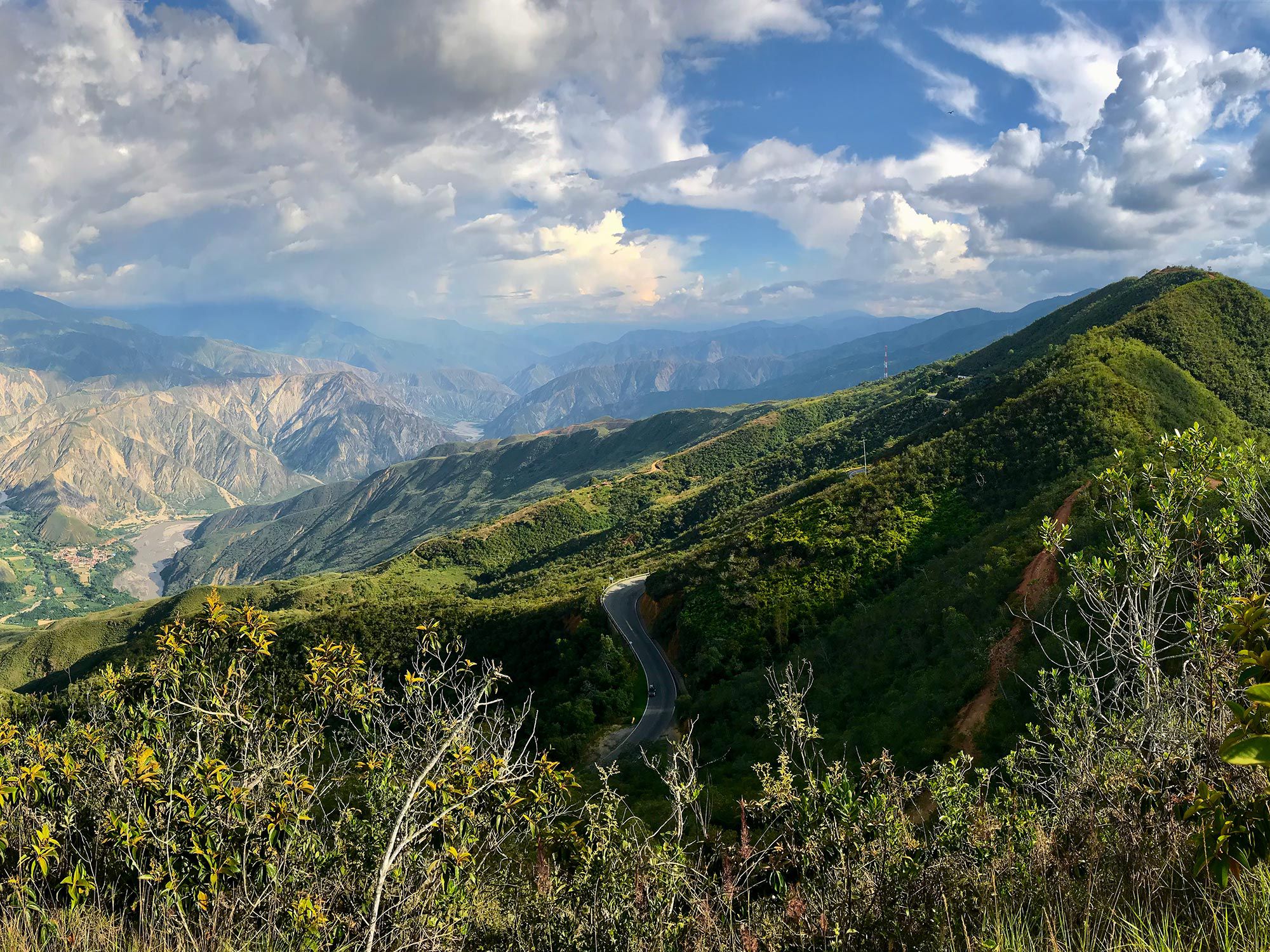
Growling, idling, waiting. Motorcycles continue to accumulate at the front, skirting double yellow lines to pass the long queue of larger vehicles, arriving at the nearest point to the boundary which separates the red from the green, the pause from the passage. With our animation suspended, a heightened sense of awareness falls over me, throwing every detail into stark relief. The breeze moving through the massive mango tree overhead, with its budding mangoes developing in grapelike clusters, the impatient air horn from a semitruck far behind me, and the reflective tape sewn into the pants worn by the single individual we all collectively stare at: a construction worker holding the red “Pare” (stop) sign. He stood ahead of us, apathetically holding our near future in his dust-covered hands. With throttles ready, we glared intently, watching for even the most subtle change in body language—any movement to indicate he’d be flipping the sign around to green “Siga.” We were like dogs before a race, panting in the heat and raring to chase down the ever-alluring reward of the open road.
RELATED: Motorcycle Riding Tips – Touring During COVID Pandemic
This isn’t just any open road either, this is the gateway to the Chicamocha Canyon, a paved road draped across one of the planet’s largest and deepest canyons, located in the stunning eastern mountain range of the Colombian Andes.
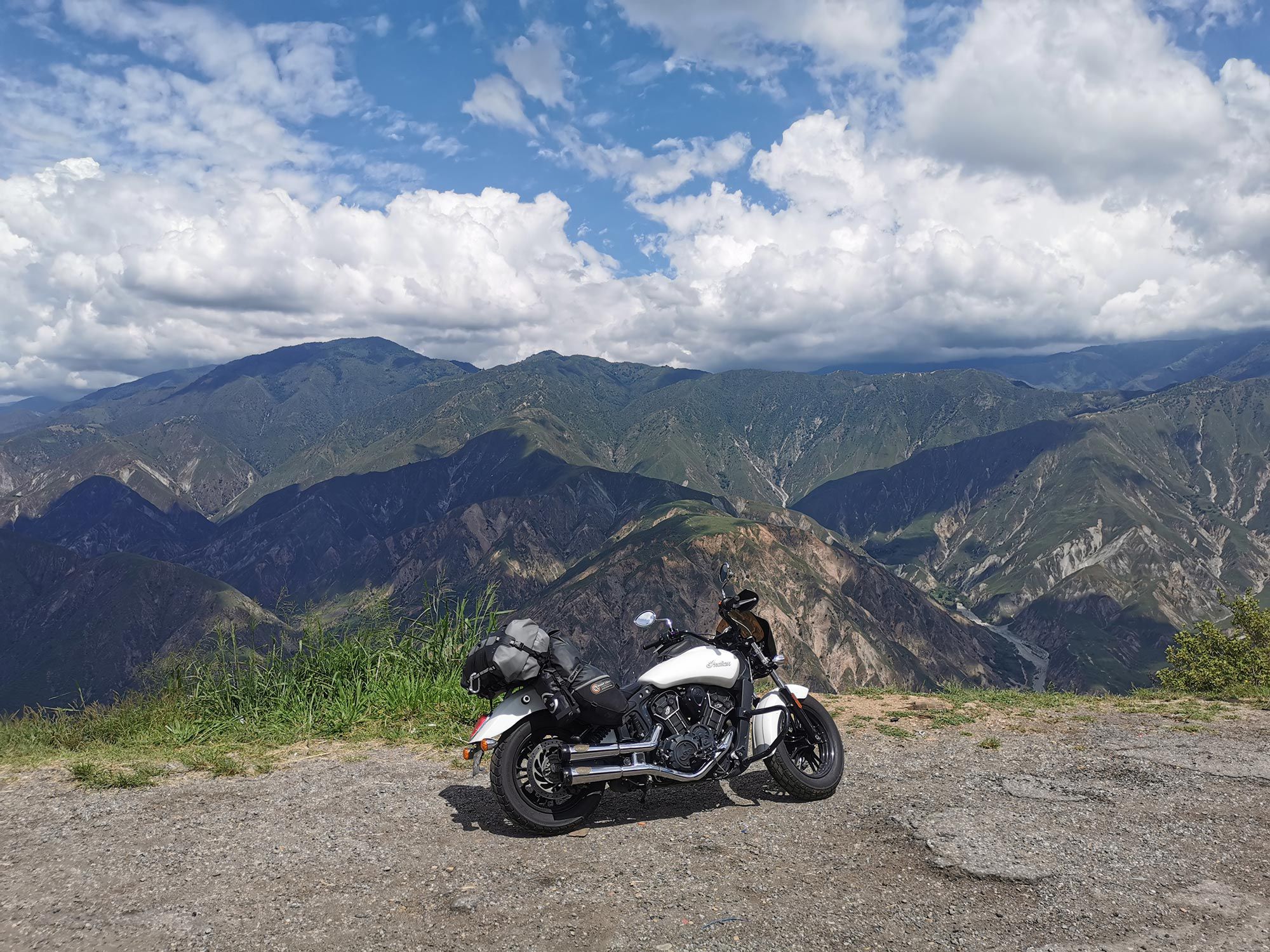
The paradoxical bright side of this construction bottleneck is that motorcycles all get to move to the front, allowing for the opportunity to peel away from the typical cargo-laden congestion of this arterial highway, accelerating along each bend of the river at your heart’s content.
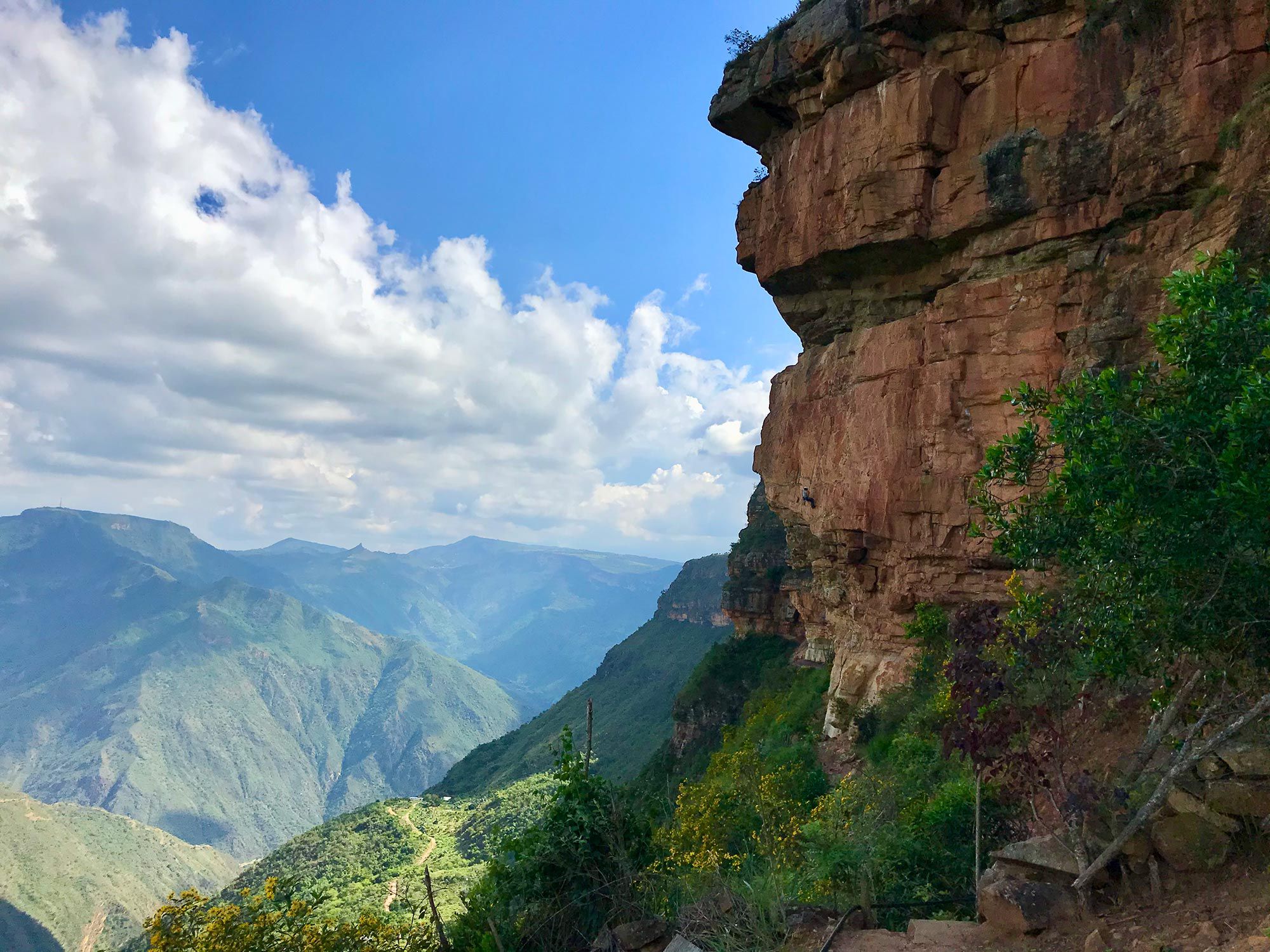
The orange cliffs tower above the road as palm trees seem to morph into cacti before your eyes, the landscape shifting with every switchback as you descend into the desert valley below. Goats amble down the sheer rock face, as agile flycatcher birds swoop across the lane—right in front of your face. It’s as if this road was made for motorcyclists, laid upon the undulating earth like the tail of a resting anaconda.
Between the contrasts in elevation, vegetation, temperature, and the wildness of the canyon itself with the conservative colonial towns of Barichara and San Gil, there is no question this is one of the most scenic rides in Colombia. With so many beautiful rides to choose from in one of the most diverse nations on the planet, naming this as the “best paved road” is a heavily weighted statement. Taking notes from the “Sagan standard,” Carl Sagan’s aphorism that “extraordinary claims require extraordinary evidence,” we’re uncovering just how deserving this phenomenal canyon ride is of that title. Far from the jungle, where true anacondas thrive, this is the tale of a mythic canyon motorcycle ride of a lifetime.
First, Acclimate
To start this journey, don’t be surprised if you find yourself emerging from the round hobbit-hole door of your accommodations, high upon a plateau. The patron saint of motorists awaits at the round table, which is likely to entail a substantial burger which—popular to the burger-crazed locals—may also contain a filet of chicken, bacon, and a side of pineapple marmalade. With nightly bonfires and artisanal, heirloom fermented beverages from a centuries-old guarapo recipe, “La Mesa Redonda” is a great place to start.
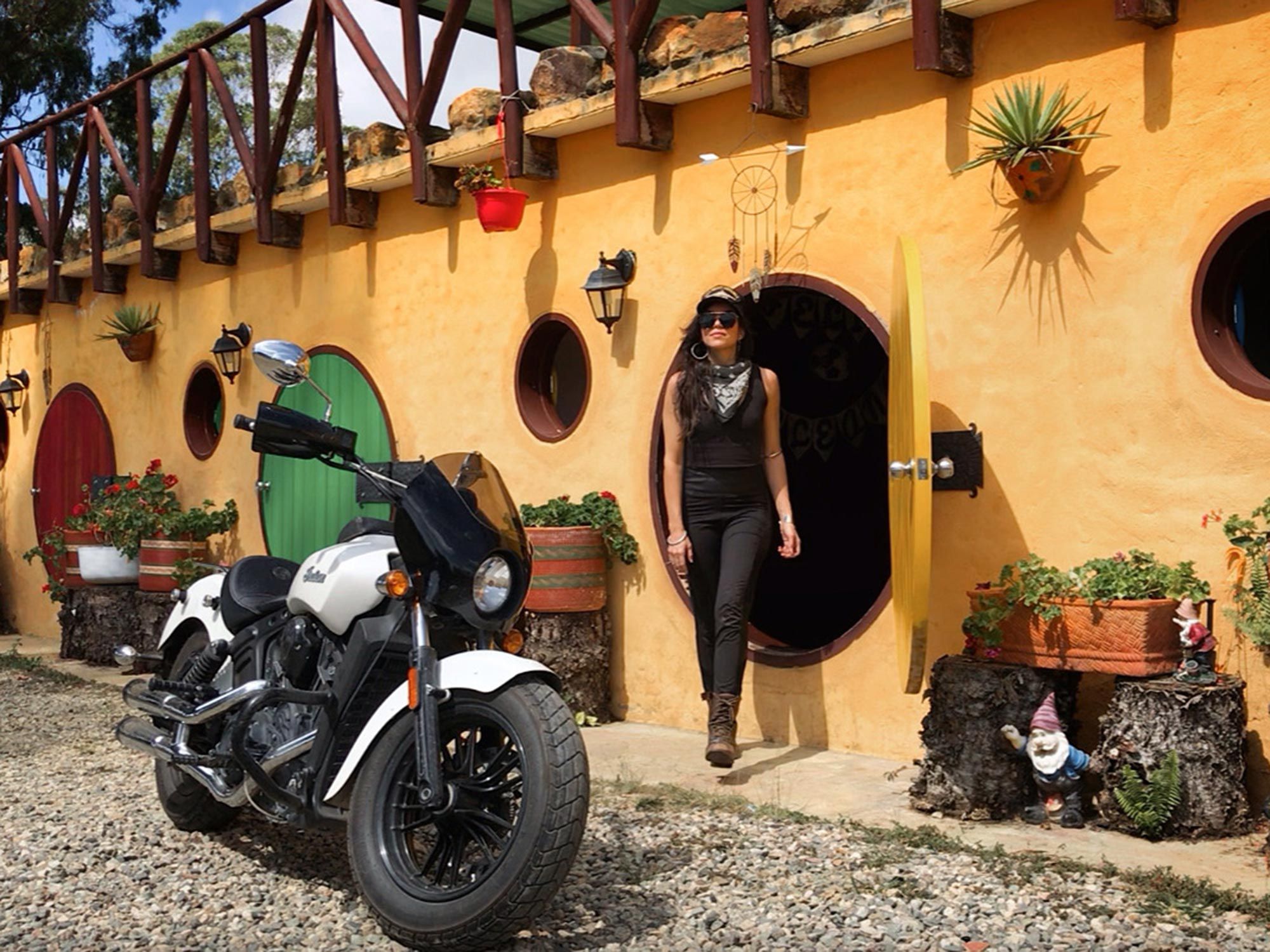
The Ride
The adventure begins on the plateau, Mesa de Los Santos (Table of the Saints), at 5,600 feet (1,700 meters), before descending along a narrow, mountainside road partly built up on a stone retaining wall, tunneled by lush foliage draping overhead with golden views of the canyon below and Santander’s capital city, Bucaramanga. The road plunges down the plateau towards the Chicamocha river basin at roughly 1,900 feet (580 meters). The path follows that of the river, with sweeping, glorious curves carrying you through the canyon’s basin, edged by walls of vibrant orange rock dotted with hearty, desert-worn greenery. The past 100 million years or so are made evident by the surrounding cliffs towering above, the passive and persistent manifestation of a river steadily carving its way deeper. Once you pass the peaje (“toll booth;” which delightfully, motorcyclists don’t have to pay) and the bridge over the Umpala River, a steep climb carries you upwards through a series of hairpin turns. Ascending switchbacks take you towards the clouds, as cacti and herds of goats stubbornly stand their ground upon the steep slope of the twisting tarmac.
RELATED: Possessed on the Road: Elon Musk Says We’re Already Cyborgs
Above the canyon, the landscape drops off on both sides as you make your way along a ridgeline at 6,000 feet (1800 meters), with no shortage of stunning views and fast curves. The route begins to descend once again at the small town of Aratoca, leaving behind the succulents and opening up to mixed agricultural lands and forest laden-hillsides. Passing through the nation’s adventure sports capital, San Gil, the road banks along the southerly edge of the canyon, spilling out into the countryside, near the heritage town of Barichara. The pavement gives way to historic streets made from large cobblestones, lined by white-washed colonial homes with traditional terracotta roofs in what is known as “the most beautiful town in Colombia”. Continue westward across the conservative town until you reach the edge of Barichara, a perfect place to watch the sunset as it sets on the rugged and wild Yariguies Mountains and tiny village of Galan.
So What Makes This Colombia’s Best?
Let’s get to it. Here are more than a dozen pieces of evidence to back up this claim.
Good weather—As stated, the Chicamocha canyon is a desert environment. Therefore you have a higher likelihood of sunny, clear days throughout the year, which you simply can’t say about other top notch roads in the country. You’ve got a strong breeze at the base of the canyon, snaking along the Chicamocha River, and with high walls on both sides, this is the land of the noon-day sun. Higher up, warm, sunny days with cool, crisp nights are the norm. Sometimes there’s a bit of fog in the morning or at dusk, just in time for dramatic skies as the sun transitions above and below the horizon.
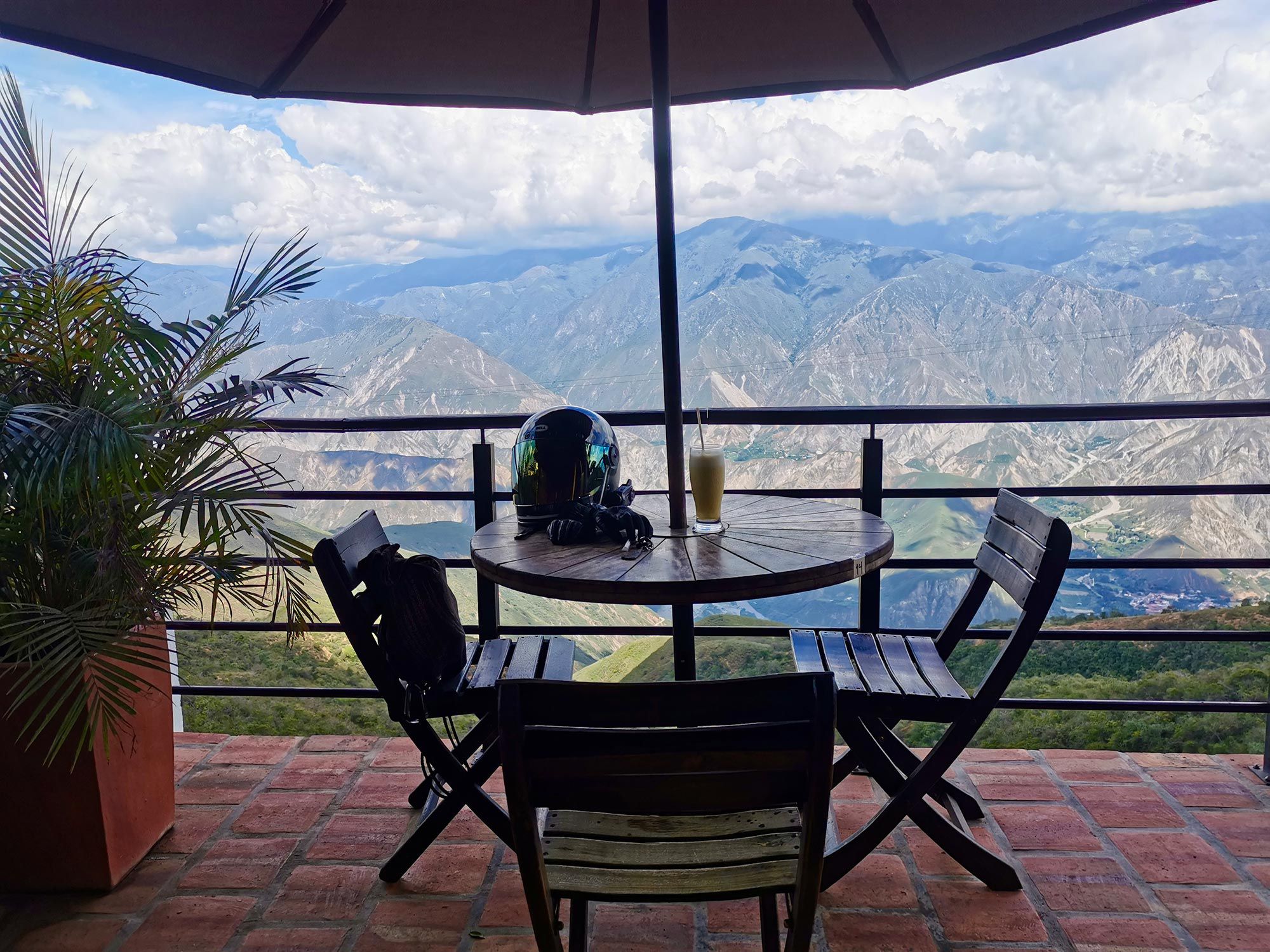
Good pavement—It’s easy to take quality pavement for granted in more “developed” nations, but scenic lengths of smooth, winding asphalt away from the Panamerican Highway are hard to come by in Colombia (in reality, even the Panamerican has its fair share of rough sections). Sure, you’ll find perfectly level, pothole-free stretches of pavement on some of the newly built arterial roads (like the Ruta de Sol), but as I’m sure you know– the real joy is riding the outskirts, such as throttling the twisties of country roads rather than interstates. The road surface between Barichara and Mesa de Los Santos is by no means perfect, but it is of good quality. There are some spots on wide switchbacks between the river and the eastern rim of the Chicamocha Canyon that seem to have been rippled by heavy trucks or shifting topography (or both), but only in a few sections.
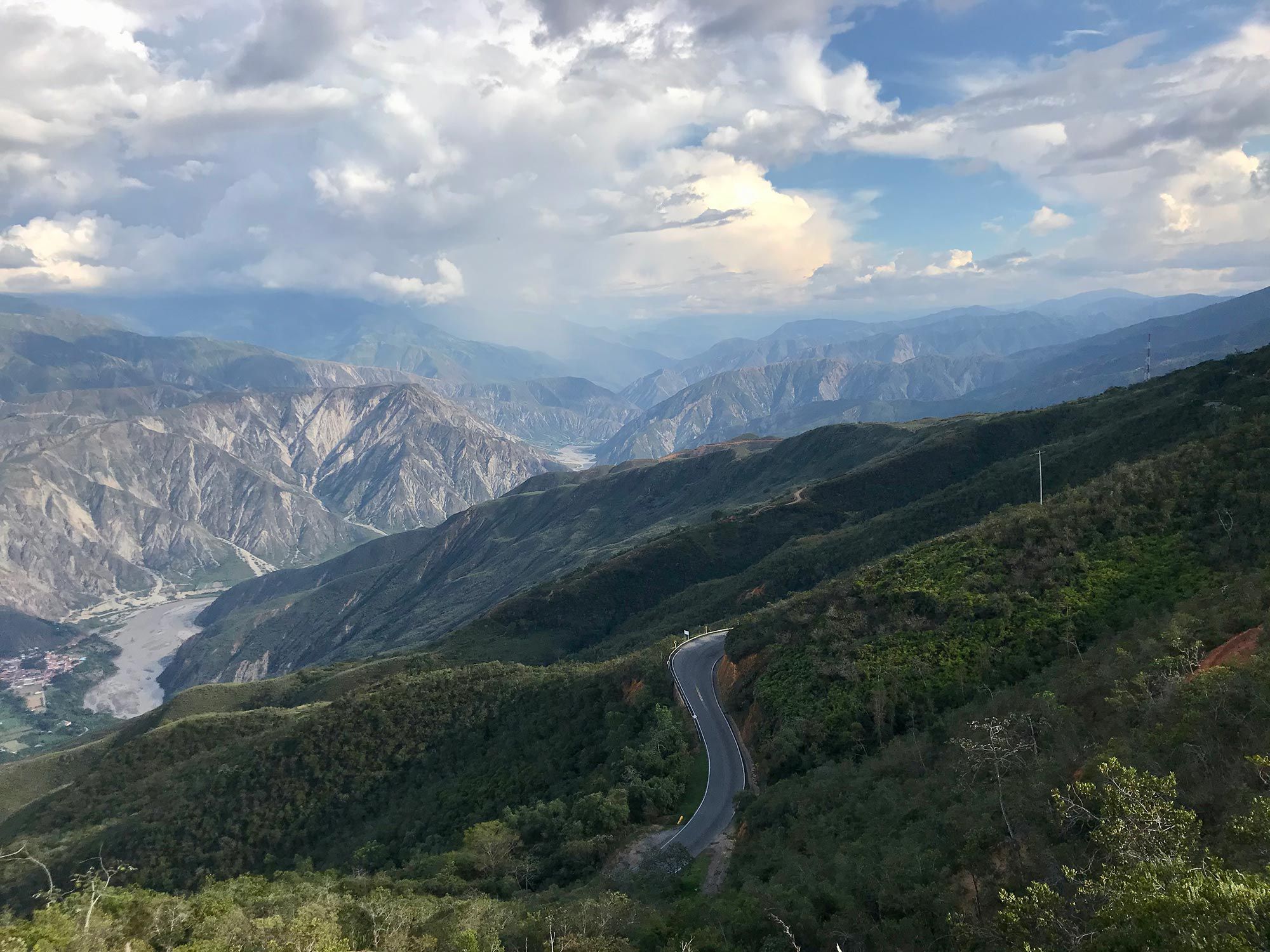
Extraordinary views—It’s hard to beat the scenic views of this canyon, especially from the ridgeline where the landscape drops away on both sides. Consider yourself warned that the views may even choke you up a little; riding out to the overlook literally took my breath away. If you have a little time to spare at the top, by spending an evening at the Cabanas Campestres and/or taking flight on a paraglider, you’ll witness the kaleidoscope of light on the canyon walls, as the shadows and colors change dramatically throughout the day. Upon awakening in my cabana, I jumped up at first light just to see what the canyon looked like at that moment (and I’m not even a “morning person”) and was rewarded with a lightshow on the canyon’s western walls, illuminating the Mesa de los Santos plateau, where the journey began. It’s hard to beat how rejuvenating staying atop the canyon is; the fresh air, starry night sky and daytime colors are enrapturing.
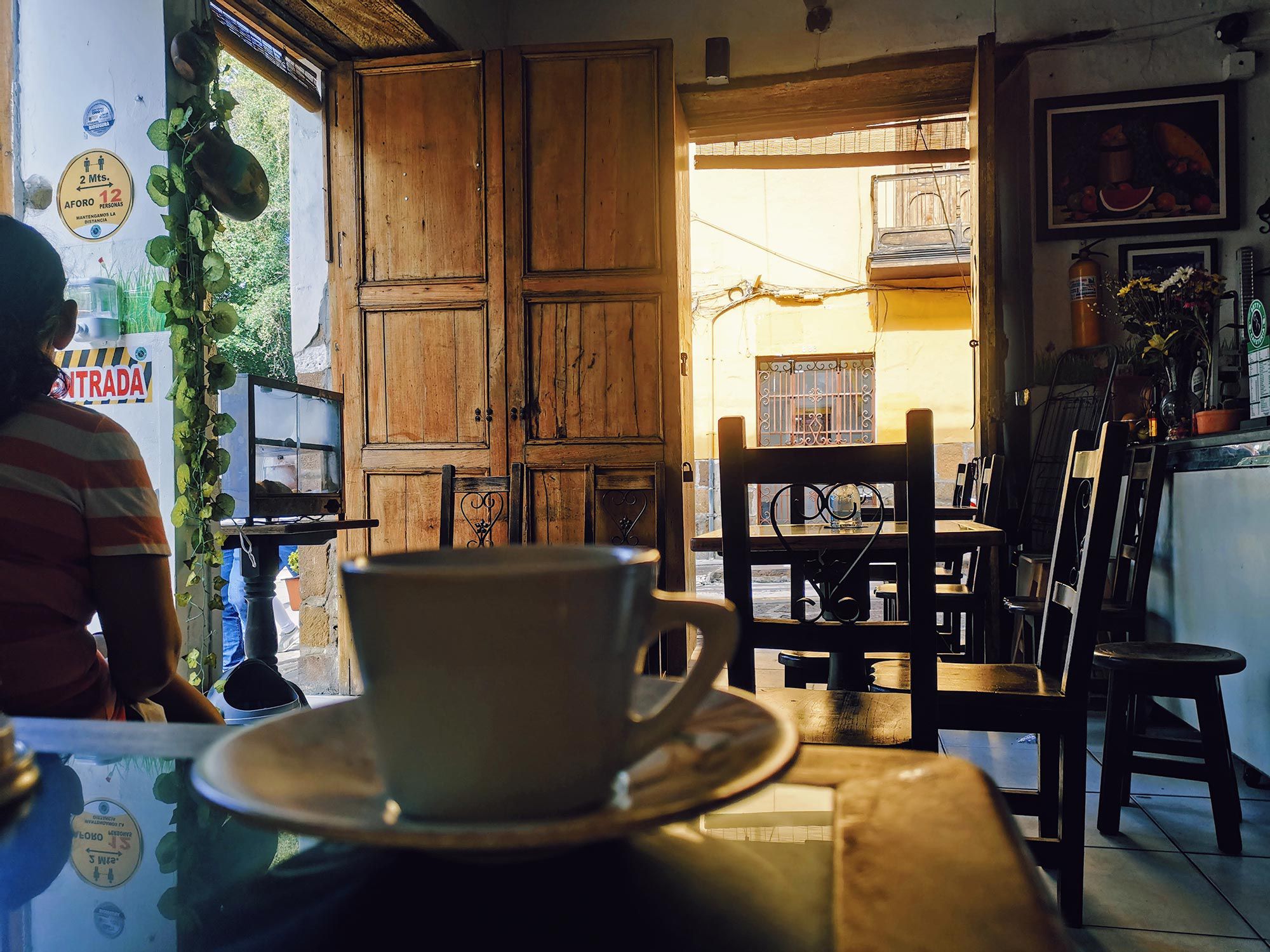
Colonial towns—Ending the ride in Barichara is really the cherry on top, as this heritage town is known as the most beautiful town in all of Colombia. With views of Guane and the Yariguas mountains to the west, cobblestone streets and a romantic main plaza, adorned with an 18th century sandstone cathedral and lined with fragrant ylang ylang trees which bloom at night, this town is a national treasure. It’s no wonder why many Spanish-language movies and soap operas have been filmed here. I highly recommend taking a detour through Villanueva, which is famed by locals for their bizarre and delicious ice cream flavors. I went for the ice cream and scenic ride, but I ended up having two portions and making a pile of new friends, with the joyful people who were there for the same reason.
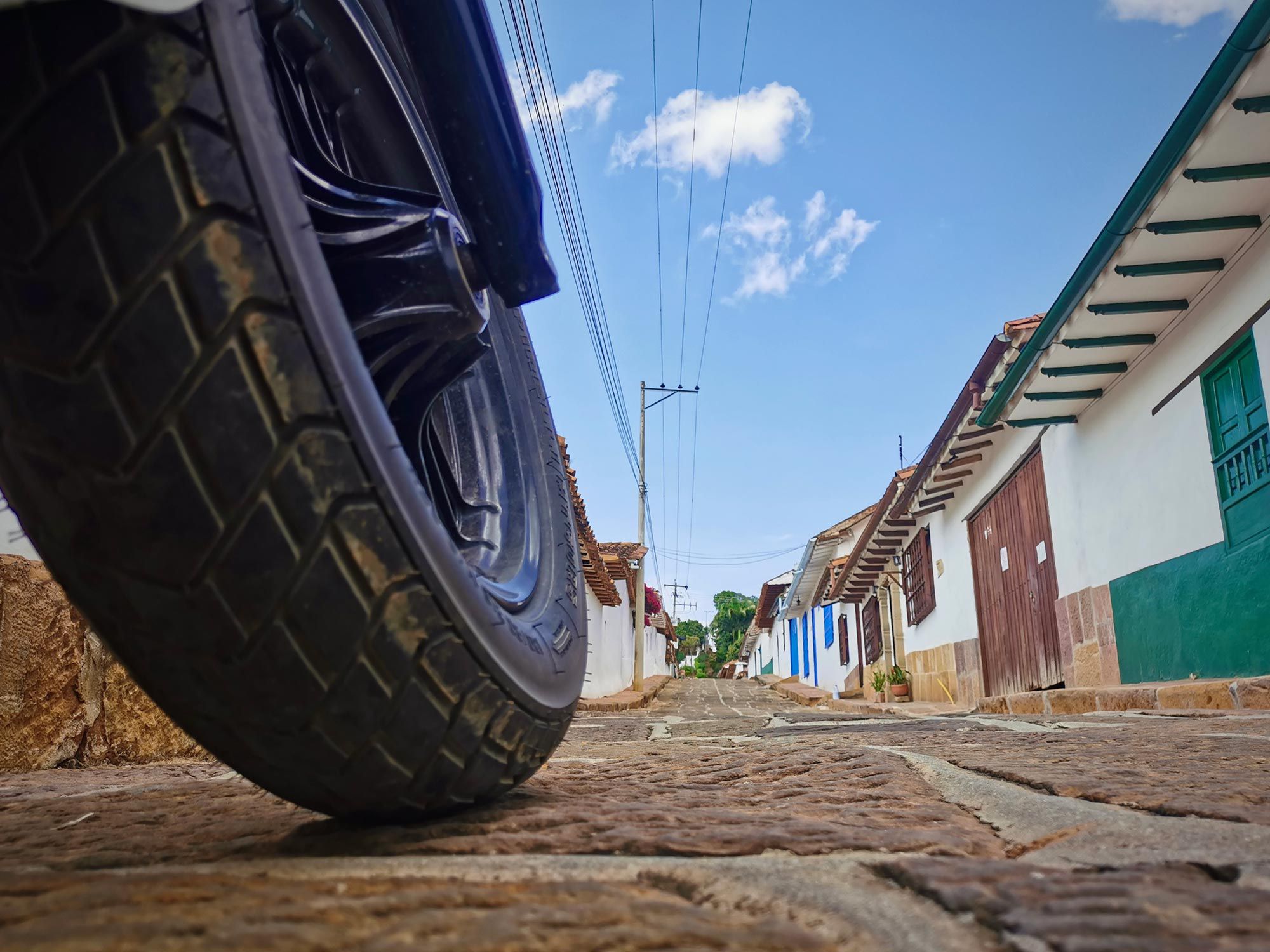
Plenty of Curves—From Los Santos to Piedecuesta, the road twists along a narrow path from the high plateau down to the river. From there, you can really get some speed on a mix of straight lines and fast corners as you follow the path of the river, even before passing the toll booth and the bridge crossing the Umpala river. It is then that you begin a series of switchbacks that lead towards the ridgeline, the eastern rim of the Chicamocha canyon and its stunning vistas, followed by sweeping curves all the way down to San Gil and Barichara.
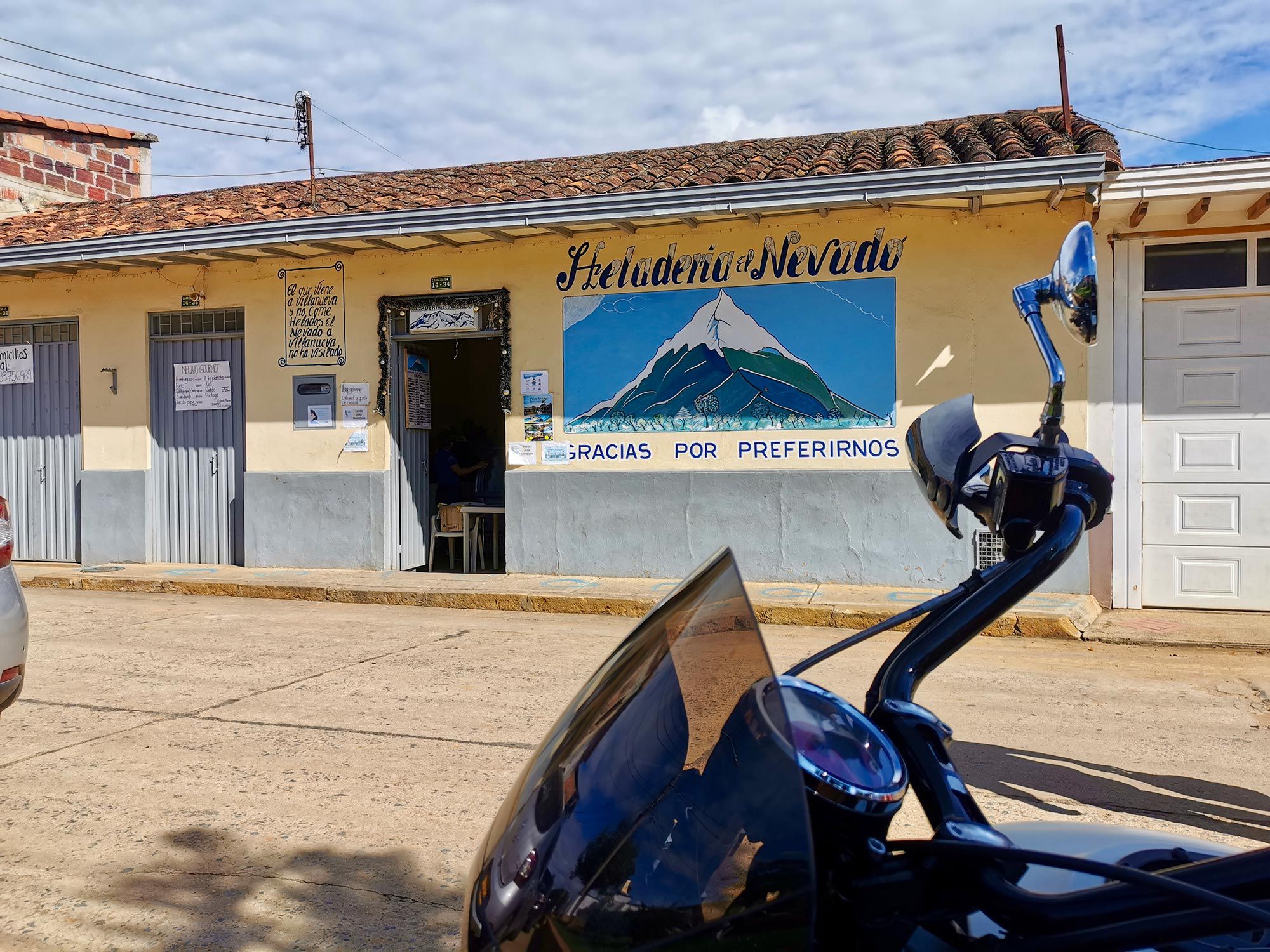
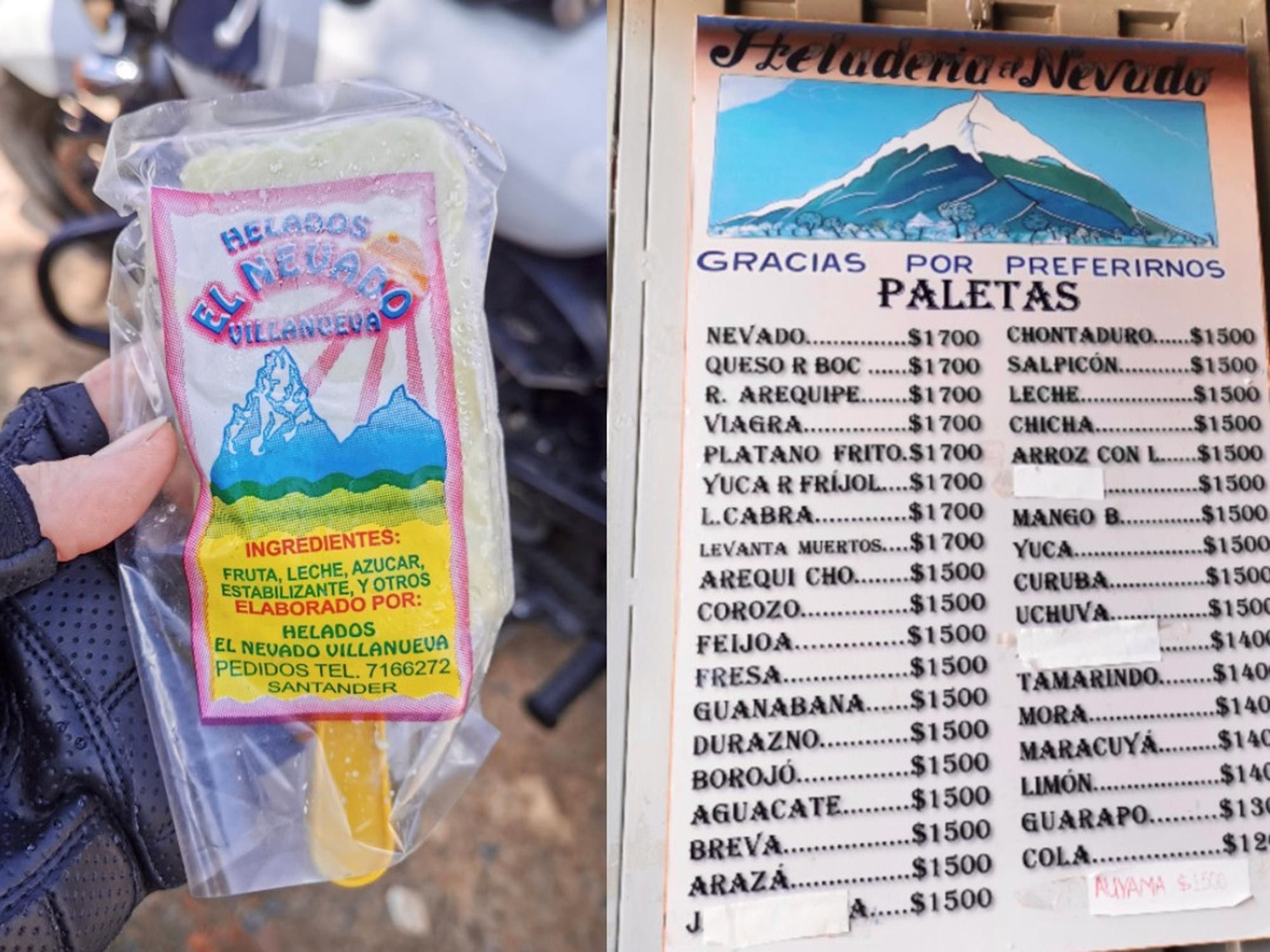
Great Rest Stops—I love stopping at the small, roadside restaurant, Rincón de Chicamocha, for a “jugo de lulo,” a strangely acidic yet creamy juice made from a local fruit in the nightshade family. They have a large patio at the precipice of the canyon, with gusty winds and gorgeous views from your table, overlooking the mountains opposite the canyon. This is especially a great stop if you plan to spend the night in the canyon (highly recommended), because the turn towards the Cabanas Campestres is very sharp, so it’s best to come at the turn from the south. It’s really the perfect little stop to have a drink with some local food, and then head to your nighttime canyon abode for the sunset. There are plenty of little stops for coffee breaks and snacks along the way as well, especially as you get nearer to San Gil and Barichara, where cafes also double as sculpture gardens.
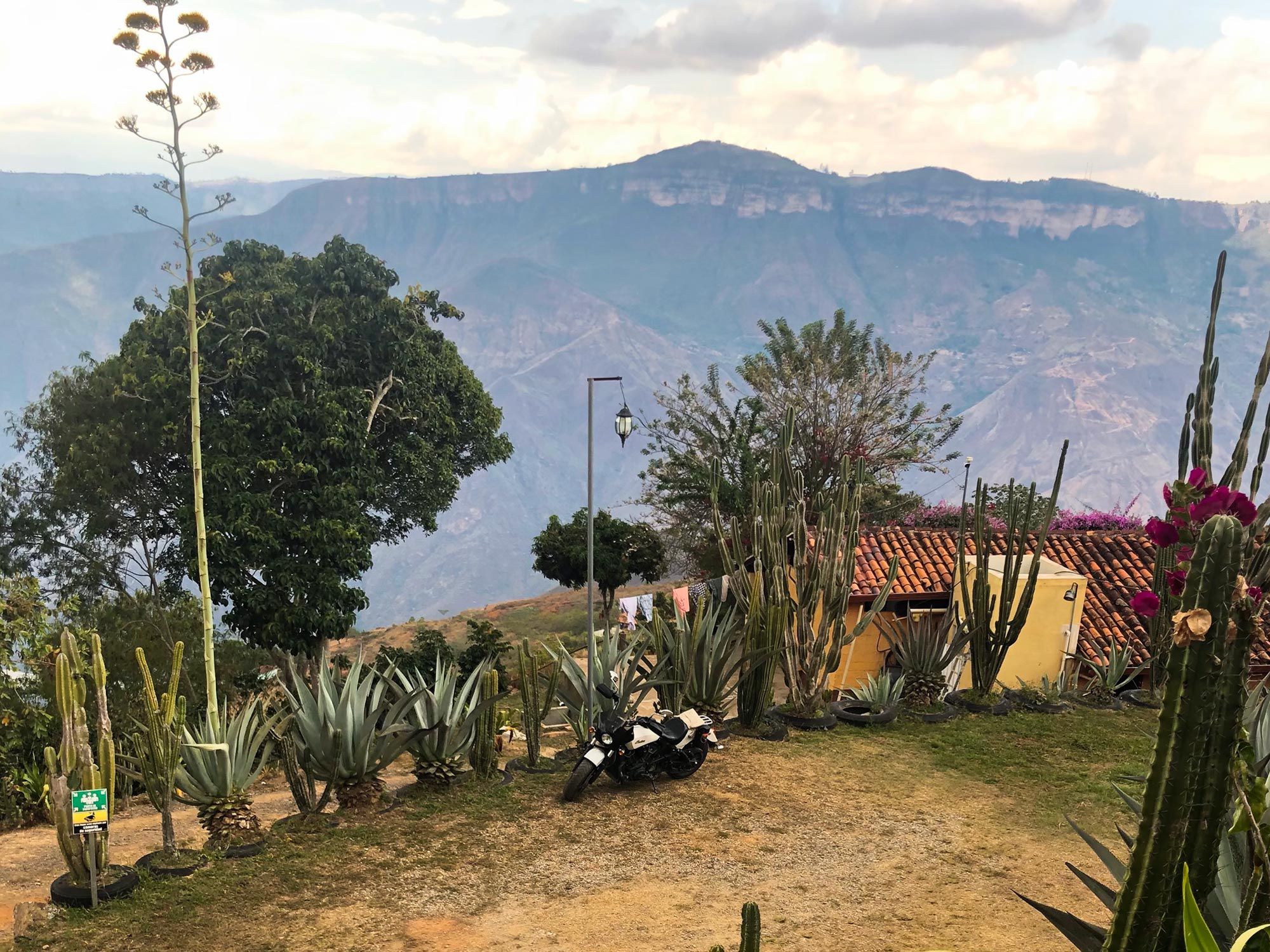
Good Food—There is no shortage of fantastic food on the Mesa de Los Santos and Barichara. Santander in general has incredible gastronomy, with lovely street-food style snacks, such as the Colombian staples of empanadas, arepas, and a delicious banana leaf steamed cake, called “esponja,” in addition to a pile of gourmet dining options. I really loved the Piedra de Barichara, as I ate there three times, because it is such a lovely outdoor setting and the food is so simple and satisfying. They bring preferred protein out on a hot volcanic rock so that it continues to cook while you eat it. With sounds of exotic birds and a waterfall cascading into a pond, dappled light flickering through the trees and draping vines, this is really a lovely place to have a lunch or early dinner. Santanderenos are proud of their cultural heritage, and love telling all about what makes their province unique in Colombia, which ranges from eating strange things, like large-butt ants (hormigas culonas), to sweet, sundried oreada meat, which is more reminiscent of beef jerky than something you’d eat with a knife and a fork, making it the perfect snack to take on the road. If you’re staying in Bucaramanga before or after your journey, be sure to stop in at Penelope restaurant for some amazing Santandereano fusion dishes proudly made with local ingredients.
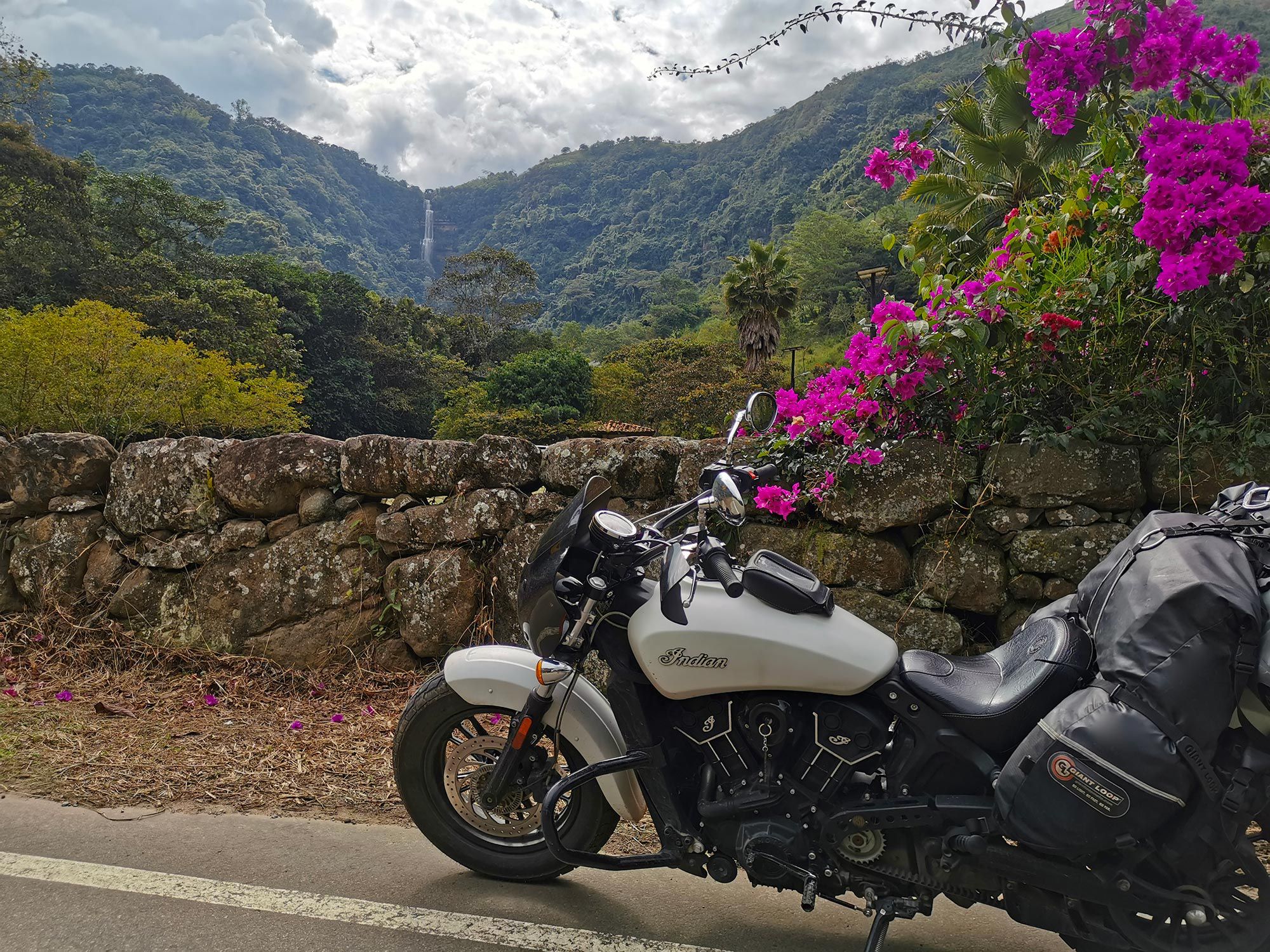
Good Drinks—Colombia has a plethora of ancestral fermented drinks, such as chicha, guarapo, masato, and kumis, which is more of a yogurt, all tasty adventures within themselves. Chicha is traditionally made from corn, but you can also find it made from nearly every fruit. While in Mesa de Los Santos, I tried chica from the fruit of a palm tree, named corozo. I had actually seen a sign advertising “Chica de Corozo” in Barichara, but hadn’t taken the opportunity to try it, so I was elated to see it offered on the plateau as well. It was delicious, but not as drinkable as the guarapo, made from fermented fruits with the addition of cinnamon and cloves, according to a 100 year old heirloom family recipe. These drinks, along with delicious artisanal beer brewed by Medieval Brewing company (Belgian style), are available at La Mesa Redonda.
Plenty of Dirt Tributaries
There are numerous options for dirt road excursions along this route. Taking the roads towards the small towns of Cepita, Curiti, and the back way from Barichara to Zapatoca, are all perfect options for expanding this adventure into some dirt tracks.
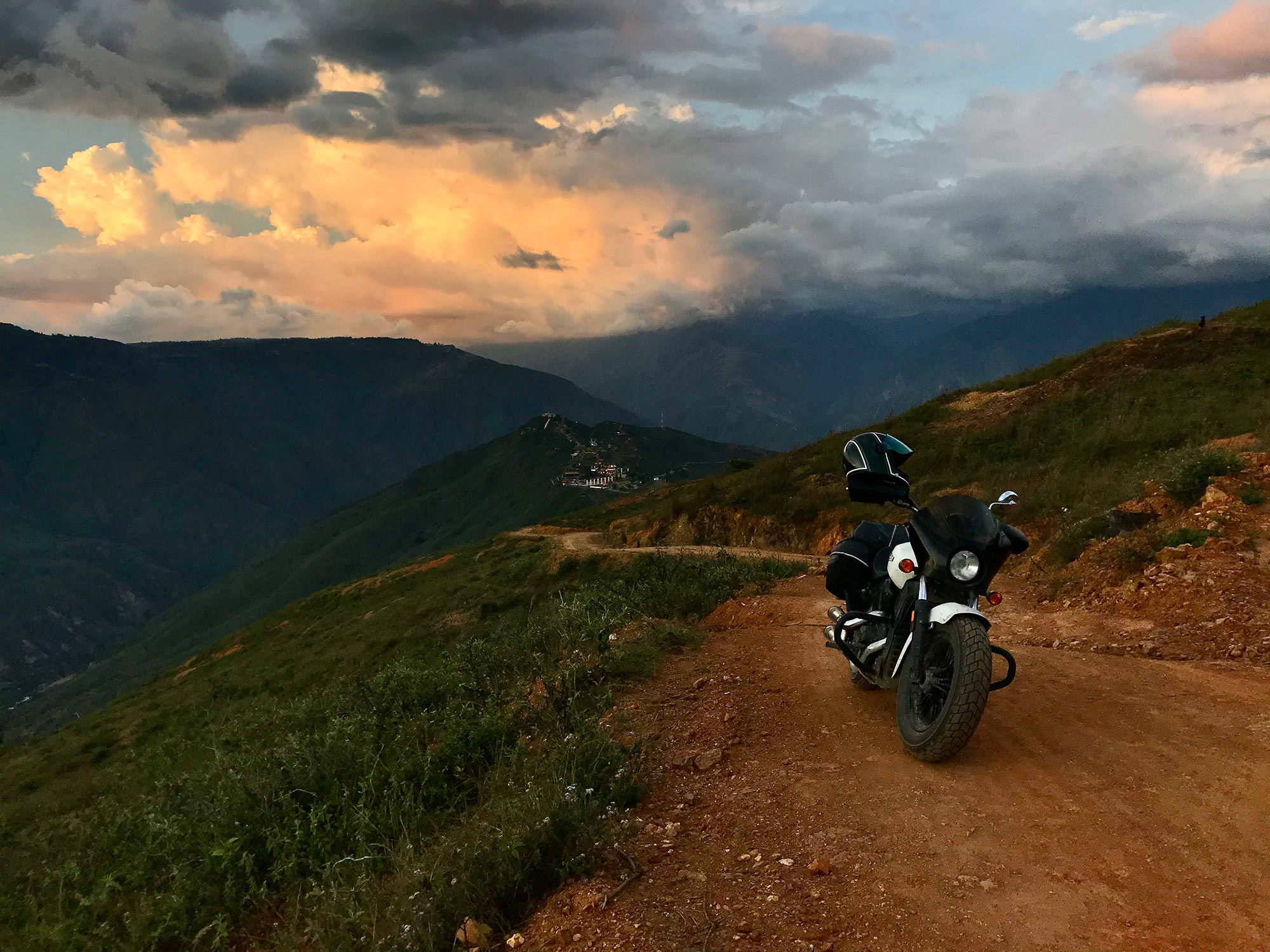
Great Lodging—There are many wonderful options, here are some recommendations:
La Mesa Redonda, with hobbit houses, glamping, and regional Colombian themed cabins, this is a fantastic spot for accommodations. They have a popular restaurant along with a myriad of activities, including a nightly bonfire under the stars.
Refugio de las Rocas: epic views of the canyon from your bed, and nearest to the epic rock climbing location of La Mojarra.
Cabanas Campestres: You can’t miss staying the night here up on the ridge of the canyon at these rustic yet cozy cabanas. Sunsets and sunrises are best here, and it is the perfect midway spot between barichara and the Mesa.
Cabanas alfarero: I adored staying at this family hacienda. It is outside of the town of Barichara, in a rural area whose family makes a living from making roof tiles the traditional way. They work the bulls to stomp on the clay and mix it with water, getting it to the perfect consistency before baking it in a huge underground kiln. The mother of the family kindly sewed my ripped pants for me. It was like being with family.
Casa de la Piedra: The guesthouse of a local sculptor, Javier Pinto Gomez, is unforgettable. His studio is an outdoor space behind the house, where he creates mind-blowingly beautiful sculptures. The view from his place is so romantic, the sun setting over the Yariguies mountains with rolling hills in the foreground. Once again, this spot is just a little ways outside of the colonial town of Barichara, a perfect five minute ride away from the town’s plaza.
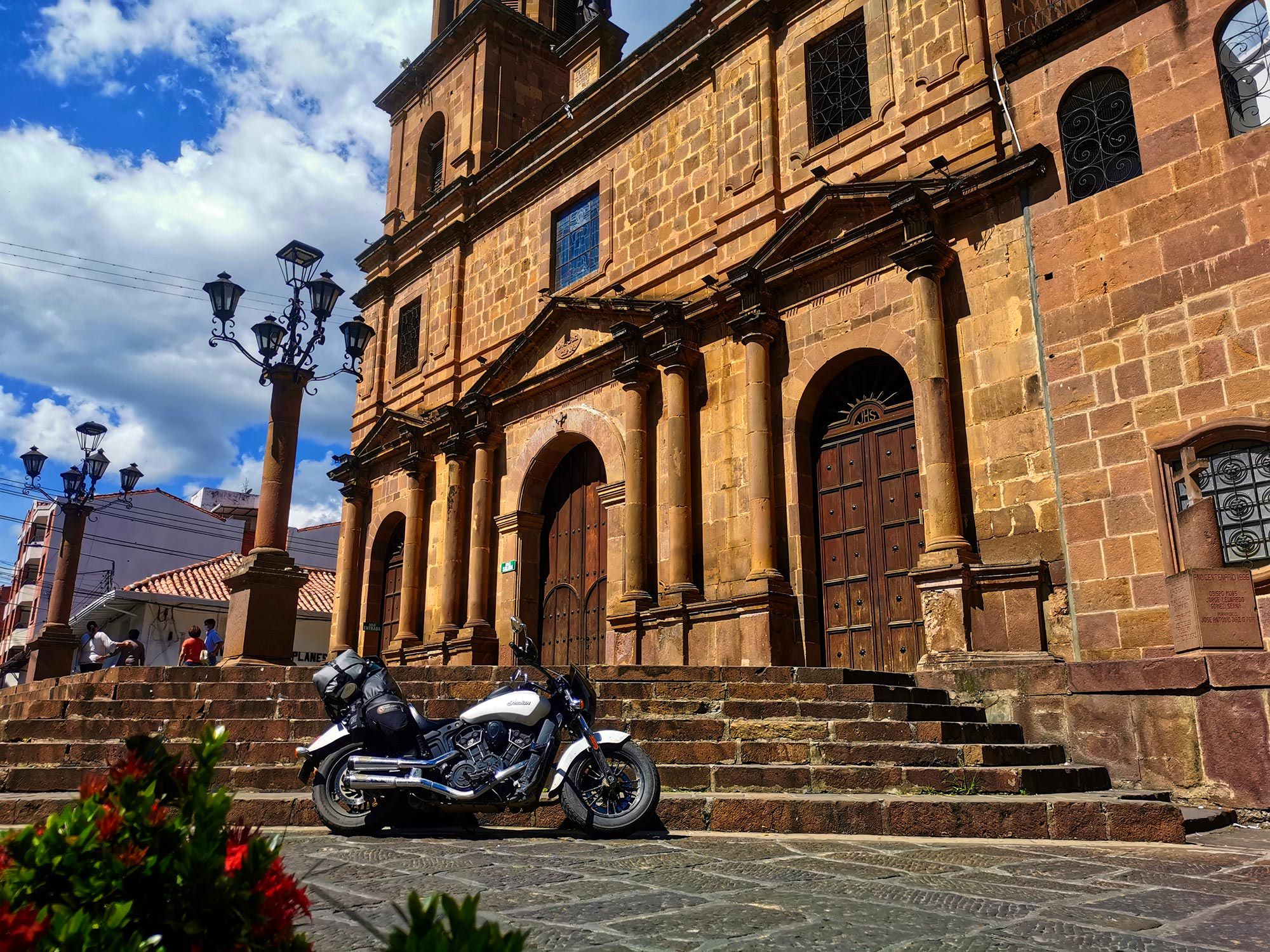
Friendly Locals—Colombians in general are some of the most friendly people on the planet. Santanderenos, in particular, are very easy going and welcoming. If you haven’t gathered how charming people from this province are from my first-hand accounts of having the matriarch of the family hand-sew my tattered pants, to making friends while enjoying strange flavors of ice cream, then you’re just going to have to experience their warm generosity and kindness for yourself.
Adventure Awaits—Santander is known as the adventure capital of Colombia, with an abundance of opportunity to steep your body in endogenous adrenaline. There’s white water rafting in the canyon’s river, rappelling down the nearly 600 foot waterfall of Juan Curi, spelunking, ziplining, paragliding, rock climbing, mountain biking, hiking, horseback riding, and of course, motorcycling. The paragliding can be arranged at Cabanas Campestres, with the take off location a short walk from the cabanas. It’s the highest take off point in South America, so you are able to get an incredible view of the area by soaring among the birds at high elevation on rising thermals.
History and Culture—This canyon itself and the surrounding area is filled with fossils and ancient relics of past civilizations. The ride carries you through not just through this geologic feature, but also the ancient lands of the Guane, a tribe of skilled artisans who left behind a great deal of pottery, petroglyphs, and carved stones. Barichara has remained frozen in time for over 300 years, with locals dedicated to preserving the town’s heritage. People from Santander love their province and for good reason, there is a lot to behold here. In the late 1700s, farmers fought against unfair rulers in what is known as the Peasant Revolt. They are strong willed, joyful people, who enjoy sharing their culture and traditions with visitors.
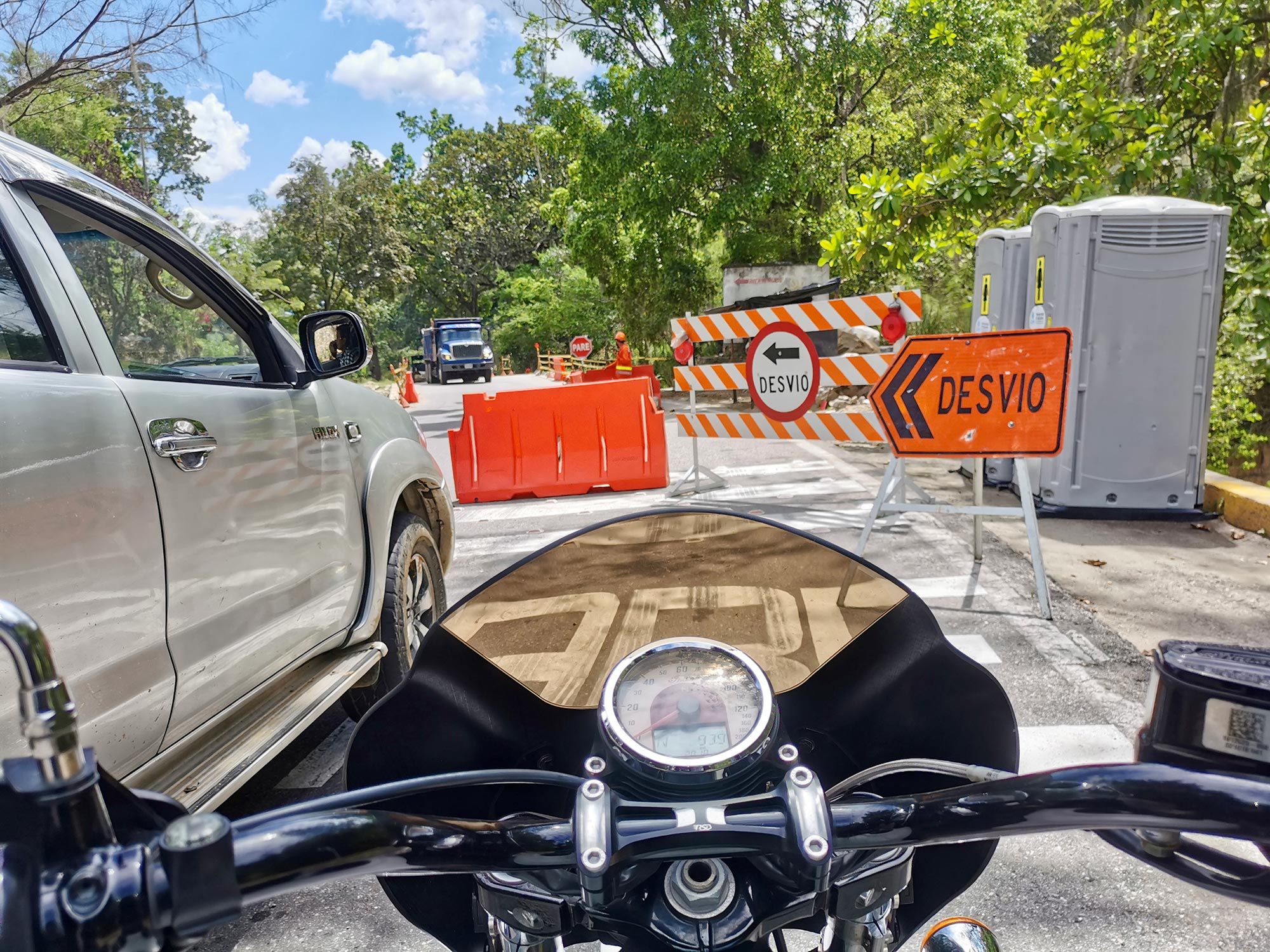
So What’s the Catch?
The pitfall of this road stands firmly in it’s connection between Colombia’s capital city, Bogotá, and the growing city of Bucaramanga. This road is therefore notorious for heavy traffic, much of which are large trucks transporting cargo. It can be a real pain to overtake them along this road, and I find that once I’ve passed a whole string of them, I’m less likely to stop to enjoy the view or snap a photo because I don’t want to have to overtake all those trucks again. Colombia also has this annoying practice of “para-sigas”, stop and go’s, where they often keep people backed up waiting for much longer than is reasonable. However, there is a silver lining to this nuisance. When traffic is stopped for construction, motorcycles are able to pass all of the vehicles waiting in line, skipping ahead to the front. When the starting line is too packed with motorcycles, I’ve even stopped on the other side of the line to wait for the “go ahead.” That means that when they finally switch that baby around to green, you get the first shot at being ahead of everyone else, with a completely open and empty road ahead of you. The para-siga leaves you with an advantage, gracing you with the entire road to yourself, which really makes it an ideal situation; a blessing in disguise.
Is It Safe?
Ravaged by a violent past, no family escaped the tragic effects of a civil war which lasted more than 50 years. The country has since opened up for not only its citizens who are exploring their own nation for the first time, including internal refugees who were forced into the cities and now are traveling back to their rural lands, but to outsiders as well. A foreigner on a motorcycle would have been an extraordinarily rare sight 20 years ago, if not completely unfathomable—even after Escobar’s death.
Interestingly, the area around the Chichamocha canyon didn’t see the type of violence that existed elsewhere in the country. Because this is a desert ecosystem without trees for cover, guerrillas and paramilitary units didn’t dare conduct their clandestine business there.
RELATED: Three Times Lucky: Recounting Motorcycle Traffic Stops
It’s hard to explain to someone who doesn’t already know the magic of Colombia, from its diversity in landscapes to the friendliness of the people, because it’s something you have to experience to believe. Colombia has and continues to endure so much struggle as a country that is enriched with vast amounts of natural resources and impoverished by corruption.
As for my own two cents, after riding more than 10,000 miles around Colombia solo on a motorcycle—my love for this country and its people only grows. Colombia, and it’s “best paved road” are not perfect, but there are certainly many flawless moments to be had in truly living life to the fullest while exploring parts of the earth on two wheels, especially within the Chicamocha Canyon.
Source: MotorCyclistOnline.com
